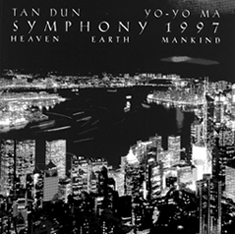

One of the great composers of our generation is coming to Oberlin. Next Wednesday in Finney Chapel, Oberlin will have the opportunity to hear the works of Tan Dun, a well-known Chinese composer. In this age of multi-media and cross culturalization, Tan serves as a main link between tradition and innovation, and Eastern and Western music.
One of the most innovative composers in today's repertoire, Tan has his roots in the Chinese countryside. He was born in 1957, in Hunan, China. It was there that he spent most of his childhood with his grandmother, planting rice in a commune during the Chinese Cultural Revolution.

By the age of 18, understandably inspired by his agricultural surroundings, Tan began to collect folk songs and music and he started conducting various musical gigs around his village. He joined a Peking opera company, and it was there he first encountered Western music. He studied at the Central Conservatory, a renowned institution in China. In 1986, he came to New York, where he lives today.
Tan has been featured in Time, Newsweek and on CNN for his Symphony 1997 (Heaven Earth Mankind), which was commissioned by the Chinese government to commemorate the reunification of Hong Kong with China. He was also featured in the New York Times recently for the release of his new CD, Marco Polo. This piece is an operatic work dealing with one of the first meetings of East and West.
His music is not only influenced by composers from the traditional Western repertoire, but by ancient Chinese folk music as well. He uses Chinese and Western instruments, and mixes European pitch systems and Chinese pitch systems with compositional mastery. Tan is a link between the music circles of China, mainstream US, Great Britain, and Germany.
Tan's music is able to captivate large audiences while not losing it's artistic integrity, and therefore, not only does he keep the public interested in "art-music," but he also retains the respect of serious musicians and critics. Part of the reason he is able to keep people interested in classical music is his engaging stage presence. This talent is shown in one of the pieces to be performed in Wednesday's program, called Circles with Four Trios, Conductor and Audience. Tan will conduct this piece with audience participation.
Tan describes his music as all-encompassing. "No east anymore, no west anymore," he once told a reporter. "My purpose is to be freely flying around, among all kinds of experiences. [It is] not to be driven by the wave of culture - fashion, trends, isms, schools - but to create my own unity."
Oberlin conservatory faculty and students have been looking forward to his performance at Oberlin for many reasons. Tan Dun is an important composer because he is one Tan's music is able to captivate large audiences while not losing it's artistic integrity of the manifestations of Eastern and Western cultures meshing musically, much like Toru Takemitsu and John Cage. He also is a relatively young composer, yet his music shows wisdom and maturity.
Two open functions next week will be a part of his residency. There will be an open forum (composition seminar) on Nov. 11 at 4:30 p.m. in Finney Chapel. On Nov. 12, the concert "Works by Tan Dun" will be performed by the Oberlin Contemporary Ensemble, Oberlin Percussion Group and Friends at 8:00 p.m. in Finney Chapel, with a reception following in Peters Hall.
Copyright © 1997, The Oberlin Review.
Volume 126, Number 8, November 7, 1997
Contact us with your comments and suggestions.